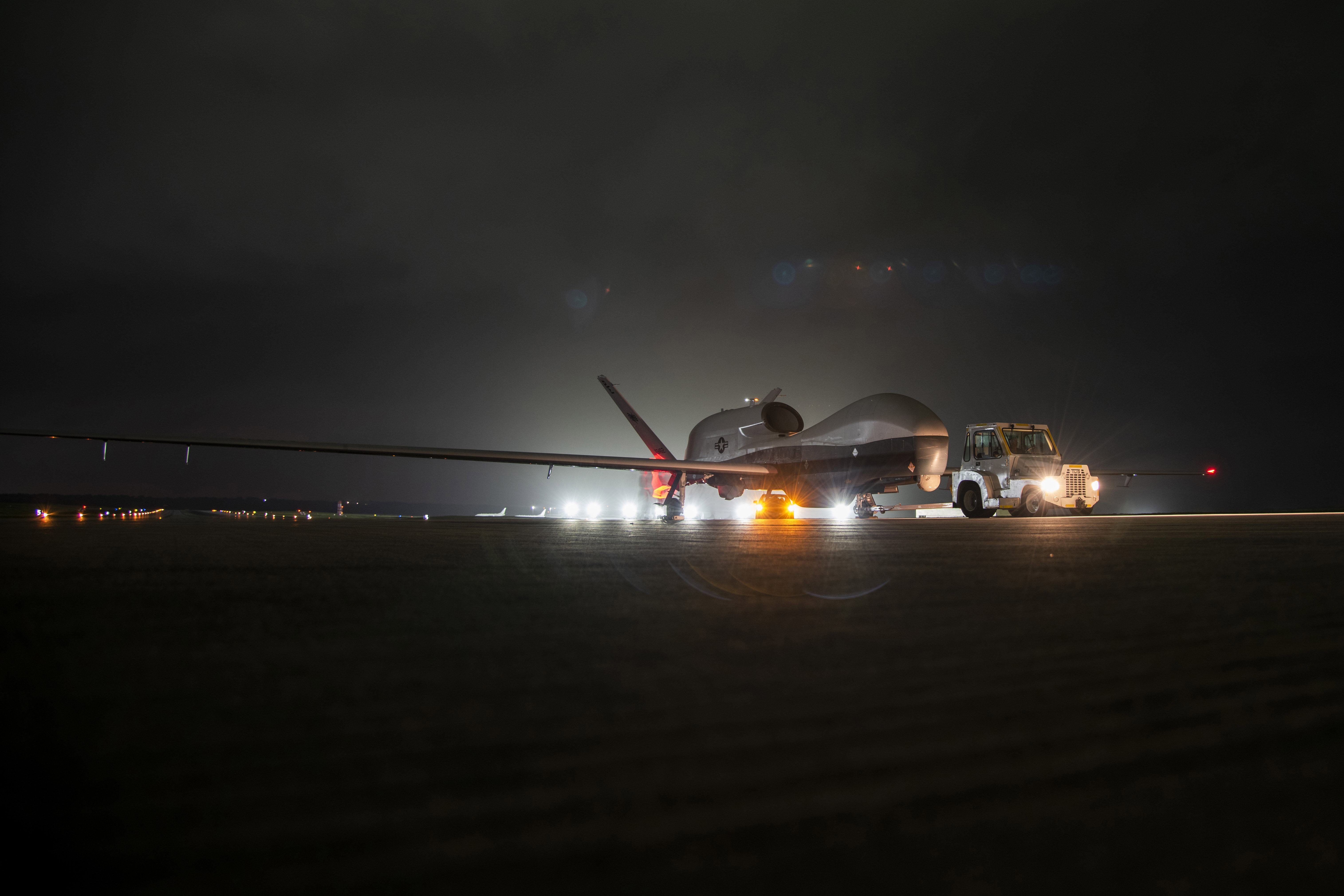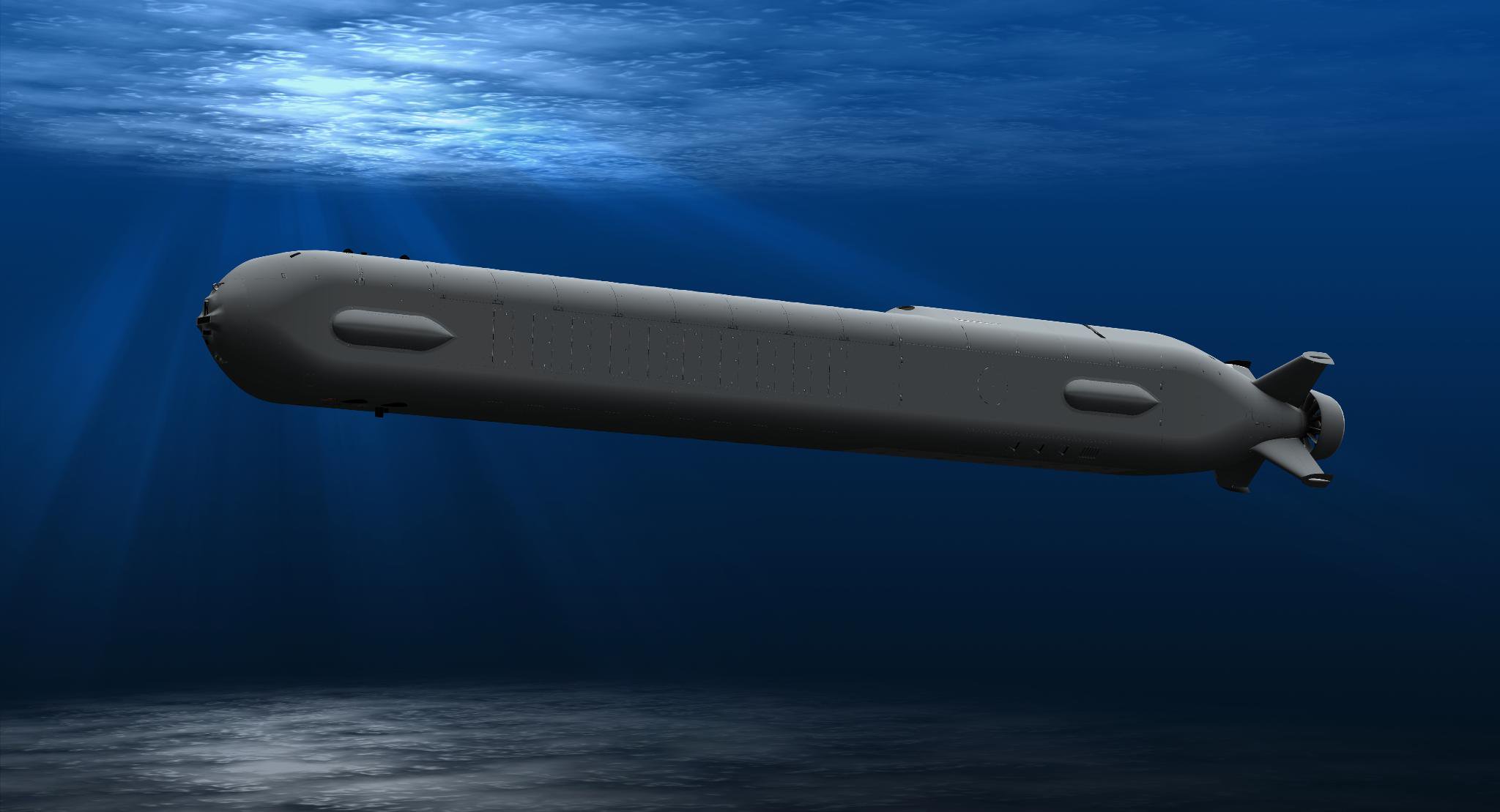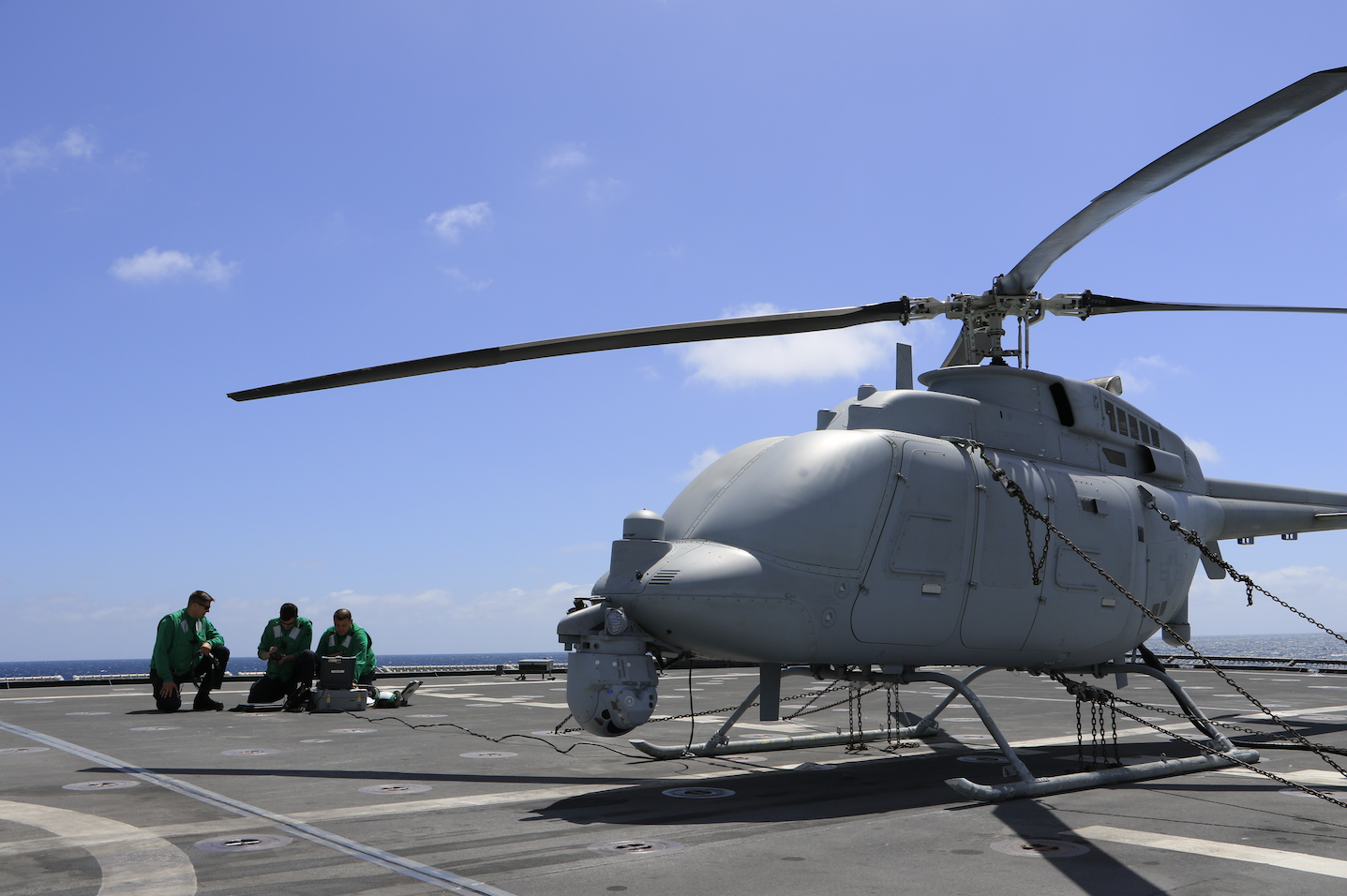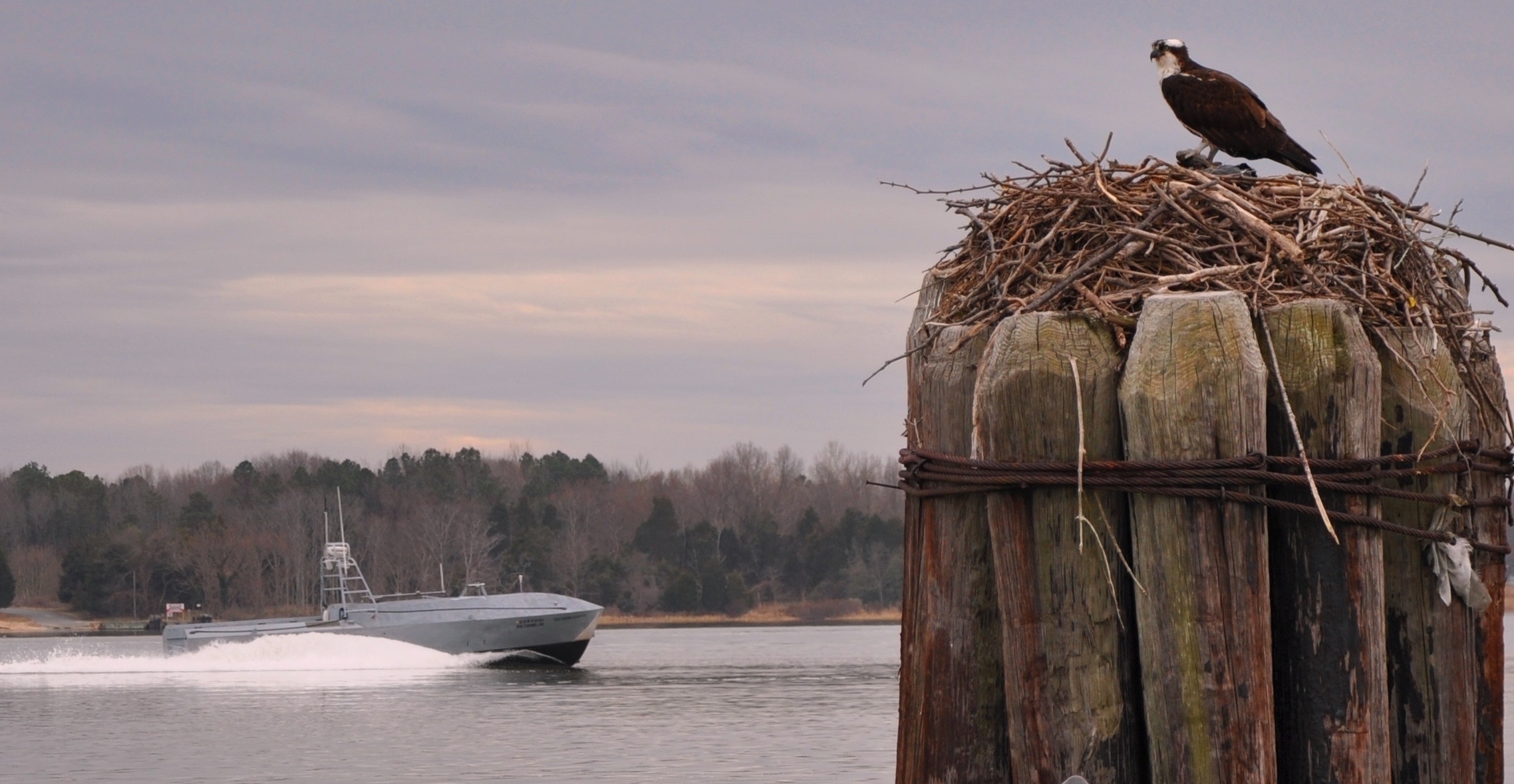
The Navy is crafting common unmanned system enablers like autonomy, network standards and control stations that would fall outside individual program offices, allowing program managers to focus on range, stealth or other features that make a particular unmanned vehicle unique.
Much like the recent frigate competition involved substantial of government-furnished equipment – the combat system, the radar, data links, weapons, sonars, electronic warfare suites and more – Vice Adm. Jim Kilby, the Navy’s deputy chief of naval operations for warfighting requirements and capabilities (OPNAV N9), said future unmanned systems are likely to have government-furnished vehicle control systems, data management systems, autonomy packages and more.
“Perhaps a program could be unburdened from having to do the requirement of development for a specific network or interface because we’re going to require them to use what we have on another platform. That’s the efficiency” the Navy hopes to achieve as unmanned platforms of all sizes and in all domains proliferate throughout the fleet, Kilby said while talking to reporters today.
Navy acquisition chief James Geurts said during the same phone call that “I also admire the Navy’s ability to separate platform from combat system and C4I system the way we build ships today. You can envision a similar mindset: again, one of the things we’re looking at in this campaign plan is, separate the platform, whether it’s a [large unmanned surface vehicle] or a or a I don’t know what kind of USV – we don’t want to have to reinvent all of the systems every time we have a new platform. And so I don’t want to have to reinvent autonomy algorithms for every individual platform. I don’t want to have to reintegrate data and learning algorithms, all the things Adm. Kilby said. So our sense now is, again, in this push for scale, we’ve got to better align resources in our organic technical base and create the strategic relationships with the providers wherever they are towards this problem.”

He added that there’s a lot of expertise in autonomy in commercial industry, where the Navy might not have existing relationships – but if the service can make those connections and tap into the expertise that exists, that knowledge must be applied to all unmanned systems across the Navy and Marine Corps, not just those where the program office was able to make a professional connection to someone in industry or academia.
The Navy is in the midst of creating an unmanned campaign plan that helps ensure the Navy is set up right to buy unmanned systems that can be networked with the manned fleet in such a way that they have a multiplier effect, not just an additive effect, in creating naval warfighting capability – and to ensure they’re bought, maintained and modernized in a way that best leverages resources instead of creating redundancies that waste money and effort.
This campaign plan comes as the Navy is also working with the Office of the Secretary of Defense to revamp its vision of the future fleet, in a study effort called the Future Naval Force Study (FNFS), which will also consider how unmanned systems will contribute to the future air, surface and undersea fleet design. Along with development of a vision of a Joint Tactical Grid to connect joint forces, and the maturation of Navy and Marine Corps operating concepts, Kilby said the efforts are “separate but related, and you have to do them together or you’re going to be in a bad spot.”

Kilby added that “if we view this from the context of how does this capability or set of capabilities contribute to distributed maritime operations, littoral operations in a contested environment, and the subset of expeditionary advance base operations, we’ll be well served. That kind of focus” has already led to a change in Navy and Marine Corps behavior on the resource sponsor side, moving from a discussion of, “I’m going to create my own unique platform to do exactly what I want to do, to really focus on commonality of, like, what do we agree on on this platform? What are common attributes? And then can we come to some kind of common entity and end state. And if we do, those platforms are more likely to operate together seamlessly.”
Geurts added that, in an upcoming era of flat or declining budgets, the Navy couldn’t afford to pay for unmanned systems and then pay again later to try to integrate the systems and all the data they generate together into some sort of useful production for the fleet to operate with. If they’re designed with a netted goal in mind, and using the same network interfaces and the same control systems, they’ll inherently be interoperable and feed into the common operating picture the fleet is using.
Kilby said he’s pleased with the role the Unmanned Maritime Systems Program Office has played in connecting unmanned surface and undersea vessel procurement, and tackling common enablers that USVs and UUVs will share. Speaking of the office’s program manager, Capt. Pete Small, Kilby said, “they both benefit from that synergy, and I’m happy that – whether it’s (surface warfare director Rear Adm.) Paul Schlise that comes in my office with Capt. Small, or now (undersea warfare director Rear Adm.) Billy Houston, I’m able to do that from a common lens and make sure that we’re approaching it. So I think there’s some great synergy from that acquisition connection in this specific case.”
Small spoke earlier this week at an Association for Unmanned Vehicle Systems International (AUVSI) annual defense conference, updating on the progress his office has made on enablers that include a Common Control System and data management plan that will support future machine learning efforts.
Small said the Common Control System is a command and control and mission planning system already in use in the aviation community with the larger UAVs like the MQ-25 Stingray tanker, the MQ-4 Triton fixed-wing surveillance aircraft and the MQ-8 Fire Scout rotary wing aircraft.

“We’d like to have one interface that can support our family of unmanned systems across domains, whether that’s the aviation domain, the surface domain, the undersea domain. We do not want to be delivering this whole family of a variety of vehicles and platforms, each with its unique and different command and control interface, because that’s difficult – that’s a burden for the sailors to learn how to operate those things, it precludes interoperability between those systems and across domains, and it really increases the integration effort associated with our operations centers. Those might be land-based operations centers, they might be surface ship-based operations centers on a DDG platform, or even an undersea on one of our fast attack submarines. We have to integrate that C2 software on all of the unmanned platforms themselves and all of the control stations.”
Cdmr. Jeremiah Anderson, the deputy program manager for UUVs, said during the event that CCS would start appearing in contracts in Fiscal Year 2021 as a requirement for those hoping to build USVs and UUVs for the Navy.
Additionally, Anderson said, the program office is taking a close look at what data related to UUVs and USVs might need to be shared more broadly within the Navy or with industry, to allow for future machine learning efforts that could further improve autonomy or other behaviors.





